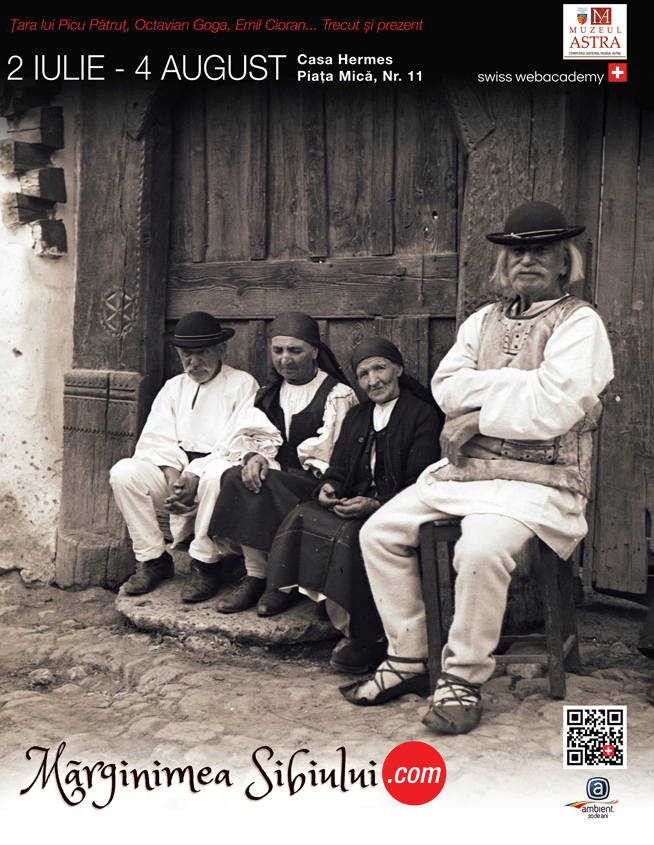The Cornel Irimie Collection gathers various items that reflect the career of an interwar Romanian sociologist under communism, ethnographic research in Romanian villages, and practices in ethnographic museums from the 1950s to the 1970s. The first items of the collection were gathered by Cornel Irimie during his student years in Bucharest and Jena (Germany). At the University of Bucharest, he had the opportunity to attend the courses of the Romanian philosopher Tudor Vianu and the sociologist Dimitrie Gusti, which are illustrated by his student notes taken during the late 1930s and early 1940s. Cornel Irimie went on to become a disciple of the Romanian sociologist Dimitrie Gusti, who is credited as the founder of the interwar Romanian sociological school at the University of Bucharest and the main promoter of the so-called methodology of monographic research. This methodology involved a multidisciplinary approach to “social units” by sociologists, geographers, historians, linguists, economists, folklore collectors, and physicians. The data collected about a community during field research were analysed by a multidisciplinary group of scholars within a comparative framework (Diaconu 2000).
Many items in the Cornel Irimie Collection reflect the influence of Gusti and his sociological school on Irimie’s work. Preserving these items from the late 1930s and early 1940s, especially his lecture notes and some notes from monographic studies carried out by some of his colleagues in villages in Transnistria under Romanian occupation from the autumn of 1943 meant assuming political risks. The books published by Gusti and his disciples were banned from the late 1940s to the 1960s and Gusti himself was purged from the academic system. He and his sociological school partially and briefly regained their place in the academic field after 1965, when Romania experienced a period of liberalisation and the study of sociology was reintroduced in Romanian universities as a section of the faculty of philosophy, only to be demoted to the status of a specialisation when the faculties of philosophy and history were merged in 1977 (Rostás 2011).
Due to the fact that Irimie was too young to have occupied official positions in the period 1938–1944, he escaped the purges of the late 1940s and early 1950s and he managed to preserve his personal archives, which are nowadays part of the Cornel Irimie Collection. After 1953, when he became an employee of the Brukenthal Museum in Sibiu (one of the main museums in the country), Irimie took part in many ethnographic studies in Romanian villages. This research activity is reflected in field notes and reports made during the 1950s and 1960s. Some of this field research was apparently incompatible with the official cultural policies of the communist regime. For example, Irimie conducted research during the 1950s and 1960s on popular religious beliefs and collected fifty-eight orthodox icons for the peasant art collection of the Brukenthal museum. It might be inferred that he thus acted against the official state policies that fought against what the communist regime labelled “religious prejudices.” However, these activities were tolerated by the communist authorities, due to the fact that the regime had an interest in co-opting ethnographers and ethnologists. From the 1960s, the communist regime transformed folklore in general and the ethnographic museums in particular into vehicles of national propaganda (Vasile 2014, 75–77). This policy of using ethnography and ethnology as a tool for the legitimation of the nationalist turn of the communist regime was continued and extended under Ceauşescu, who decided to open ethnographic museums in almost all counties. In this political context, Irimie’s endeavours to open an ethnographic museum in Sibiu received a positive answer from the local and central authorities, which granted the land for the museum in the outskirts of Sibiu (Niţulescu 2014). The ASTRA museum was officially founded in 1963 under the name of the Museum of Folk Technics (Muzeul Tehnicii Populare) and opened to the public in 1967.The Museum of Folk Technics was at that time a branch of the Brukenthal Museum. According to Lucian Robu, historian and head of the ASTRA museum archives, Irimie deliberately conceived a museum that would meet the communist authorities’ intentions regarding the use of the Romanian rural civilisation for the purpose of supporting the official cultural policies promoted since the early 1960s. Due to this reason, the new museum focused on peasant craftsmanship. The Cornel Irimie Collection also reflects the negotiations conducted by its founder with the local communist authorities and the various concepts he proposed for the future museum. Thus, the collection is a valuable source of information about museology in communist Romania, about what was allowed or forbidden to be displayed in museums under communism. Irimie also managed to negotiate with the state authorities the autonomy of the ethnographic research conducted by the staff of the Brukenthal museum and acquisition policies which allowed him to collect also religious artefacts. Although these artefacts were not allowed to be displayed in exhibitions during the communist period, many valuable artefacts were saved from destruction due to such a collection strategy.
The items of the Cornel Irimie Collection have two sources. Most of them are files that reflect Irimie’s ethnographic research, preserved after 1953 in the scientific archives of the Museum of Folk Technics. Another part, gathering Irimie’s personal documents from the period previous to the 1950s (such as his university degree certificate and his lecture notes from the interwar period) were donated to the ASTRA Museum by Cornel Irimie's widow, Livia Irimie, in the period from 1991 to 1992 in order to make them accessible for research (Maior 2003, 222). The Cornel Irimie Collection was archived in the period from 2003 to 2006 and made accessible for research. Some of the artefacts collected by Cornel Irimie that were not allowed to be displayed under communism became part of various exhibitions after 1989.

